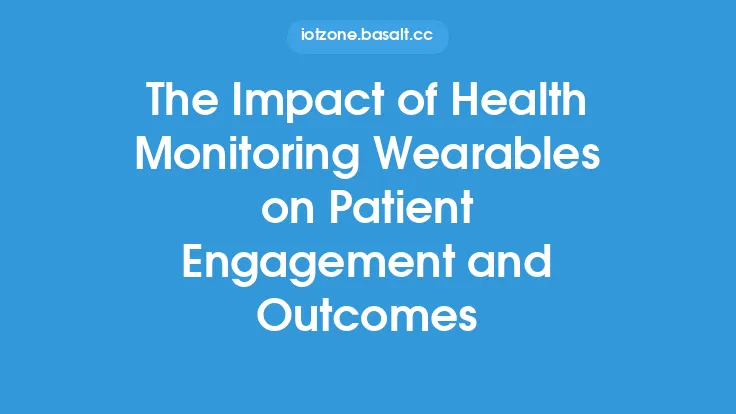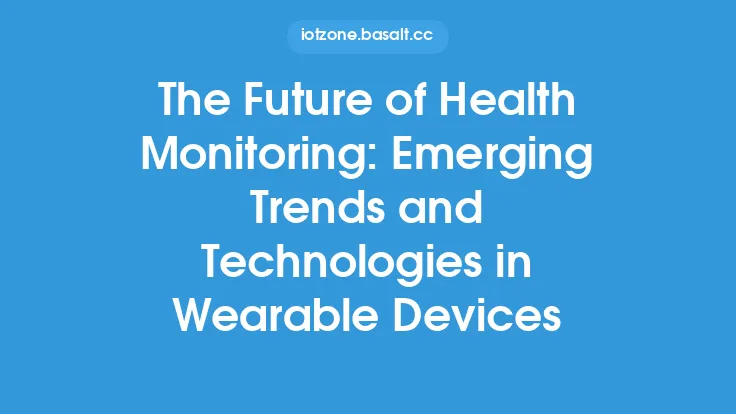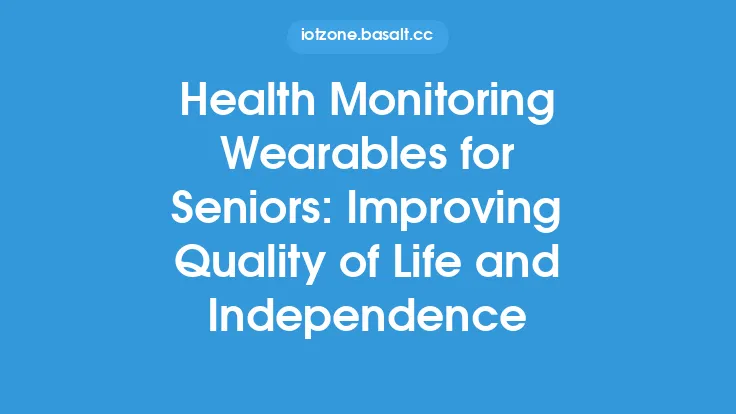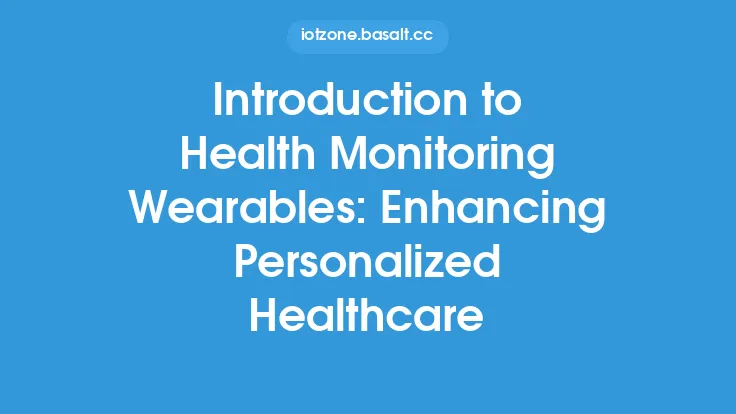The increasing adoption of health monitoring wearables has transformed the way individuals track their physical activity, vital signs, and overall well-being. However, this growth has also raised significant security and privacy concerns, as these devices collect and transmit sensitive personal data. To address these concerns, it is essential to understand the potential risks associated with health monitoring wearables and the measures that can be taken to mitigate them.
Security Risks in Health Monitoring Wearables
Health monitoring wearables are vulnerable to various security risks, including data breaches, unauthorized access, and malware attacks. These risks can be attributed to several factors, such as inadequate encryption, poor password protection, and outdated software. For instance, many health monitoring wearables use Bluetooth Low Energy (BLE) technology to transmit data to connected devices, which can be exploited by hackers to gain unauthorized access to sensitive information. Furthermore, the use of cloud-based services to store and analyze health data can also increase the risk of data breaches, as these services can be targeted by cyber attackers.
Privacy Concerns in Health Monitoring Wearables
In addition to security risks, health monitoring wearables also raise significant privacy concerns. These devices can collect a wide range of personal data, including physical activity, sleep patterns, heart rate, and other vital signs. This data can be used to infer sensitive information about an individual's health, lifestyle, and behavior, which can be exploited by third parties for targeted advertising, insurance purposes, or other malicious activities. Moreover, the use of health monitoring wearables can also raise concerns about informed consent, as individuals may not be aware of the types of data being collected, how it is being used, or with whom it is being shared.
Technical Measures to Enhance Security and Privacy
To address the security and privacy concerns associated with health monitoring wearables, several technical measures can be implemented. One of the most effective measures is end-to-end encryption, which ensures that data is encrypted on the device and can only be decrypted by authorized parties. Additionally, health monitoring wearables can be designed with secure authentication mechanisms, such as biometric authentication or multi-factor authentication, to prevent unauthorized access. Regular software updates and patches can also help to prevent malware attacks and fix vulnerabilities. Furthermore, the use of secure communication protocols, such as HTTPS or TLS, can help to protect data in transit and prevent eavesdropping.
Regulatory Frameworks and Standards
Regulatory frameworks and standards can also play a crucial role in enhancing the security and privacy of health monitoring wearables. For instance, the Health Insurance Portability and Accountability Act (HIPAA) in the United States requires healthcare providers to protect sensitive patient data, including data collected by health monitoring wearables. Similarly, the General Data Protection Regulation (GDPR) in the European Union provides individuals with greater control over their personal data and imposes strict data protection requirements on organizations that collect and process personal data. Additionally, standards such as ISO 27001 and NIST Cybersecurity Framework can provide guidelines for manufacturers to design and implement secure health monitoring wearables.
Best Practices for Users
While technical measures and regulatory frameworks can help to enhance the security and privacy of health monitoring wearables, users also have a critical role to play. One of the most important best practices is to choose a health monitoring wearable from a reputable manufacturer that prioritizes security and privacy. Users should also read and understand the terms and conditions of use, including the types of data being collected and how it is being used. Additionally, users should use strong passwords and enable two-factor authentication to prevent unauthorized access. Regularly updating software and firmware can also help to prevent malware attacks and fix vulnerabilities. Finally, users should be cautious when sharing their health data with third parties and ensure that they understand how their data is being used and protected.
Future Directions
The future of health monitoring wearables depends on addressing the security and privacy concerns associated with these devices. As the use of health monitoring wearables continues to grow, manufacturers, regulators, and users must work together to develop and implement effective security and privacy measures. This can include the development of new technologies, such as blockchain-based security protocols, and the implementation of stricter regulatory frameworks. Additionally, there is a need for greater transparency and education about the security and privacy risks associated with health monitoring wearables, as well as the benefits of using these devices. By prioritizing security and privacy, health monitoring wearables can realize their full potential to transform the way we track and manage our health, while also protecting sensitive personal data.





